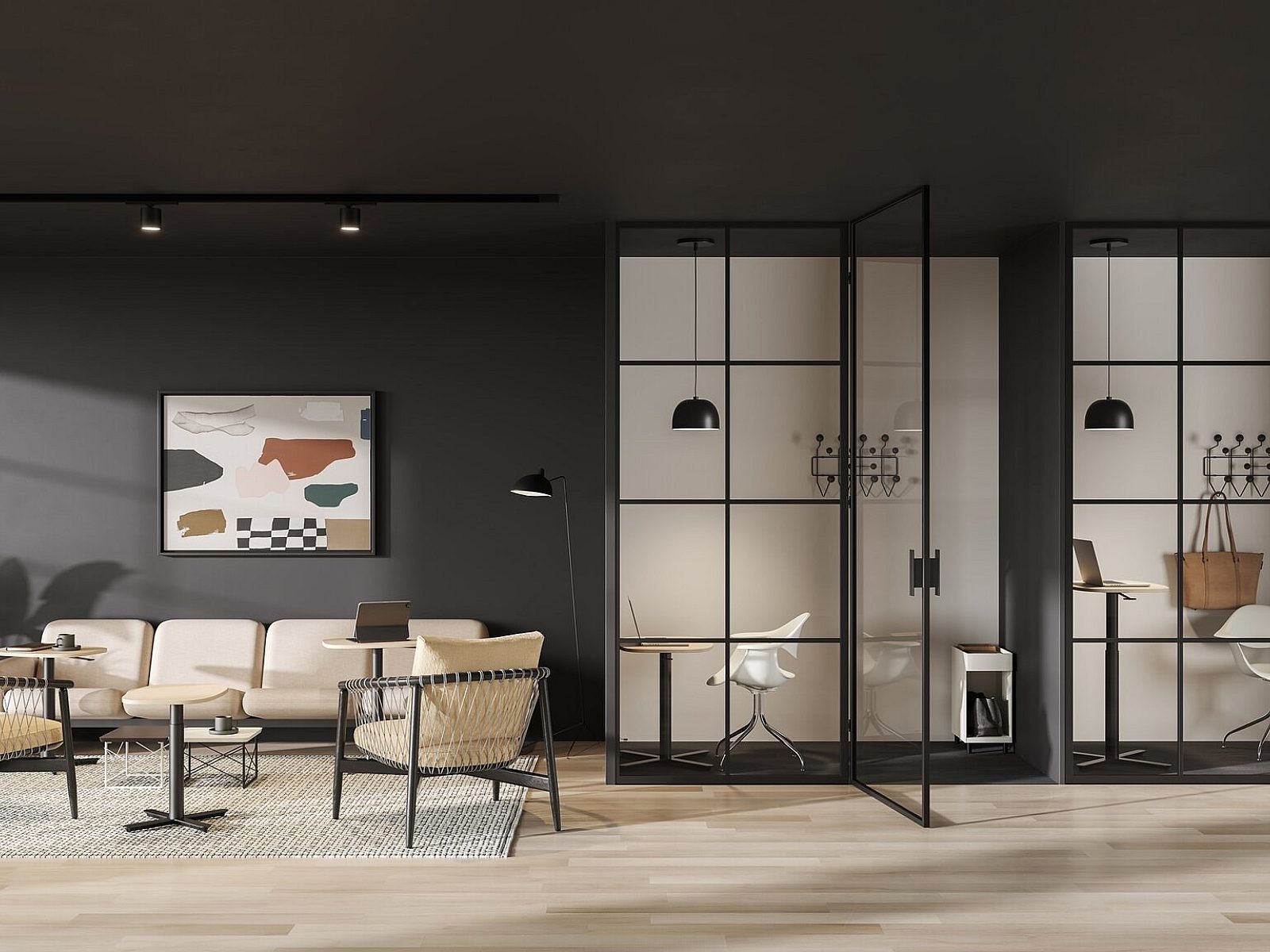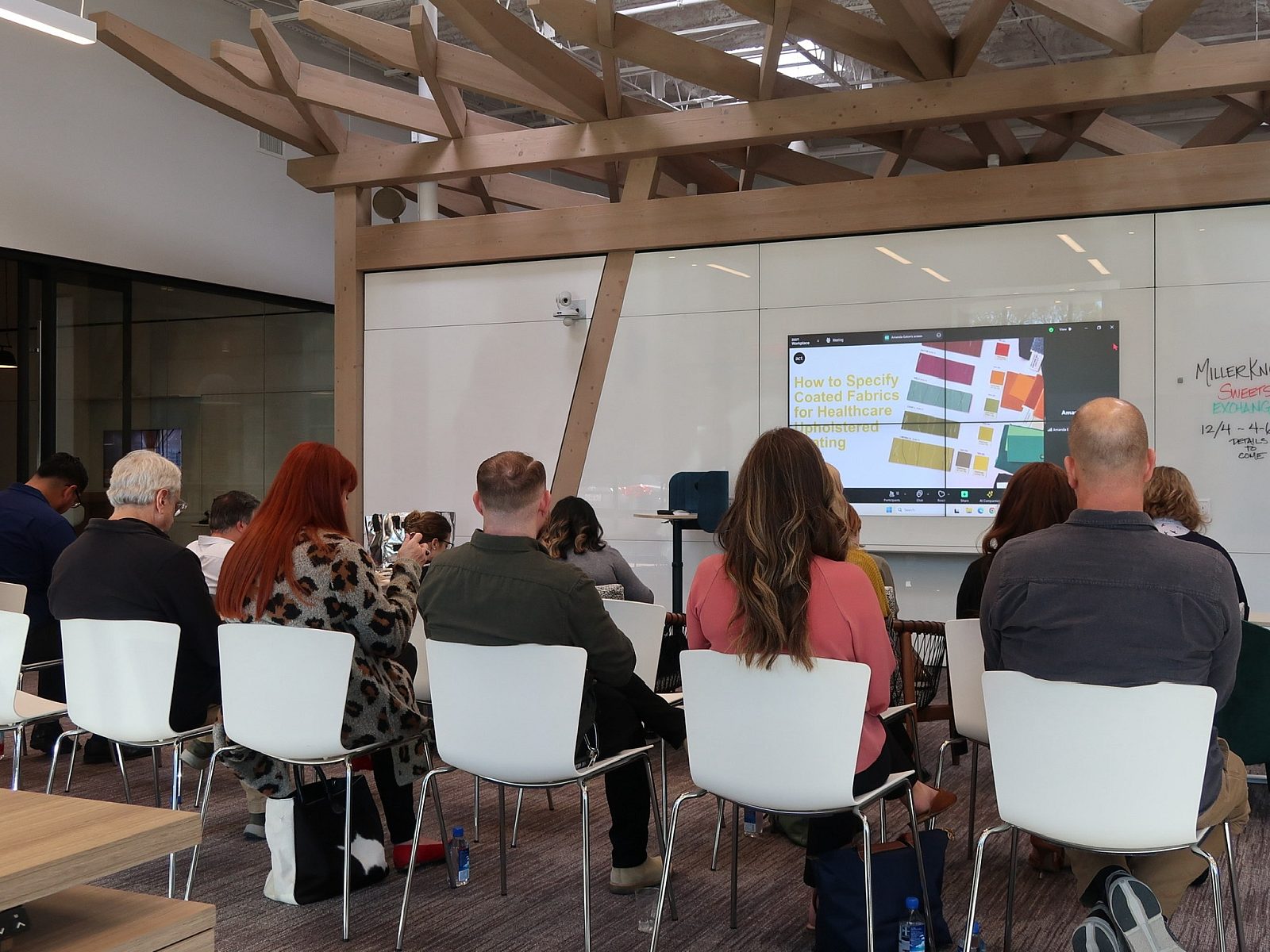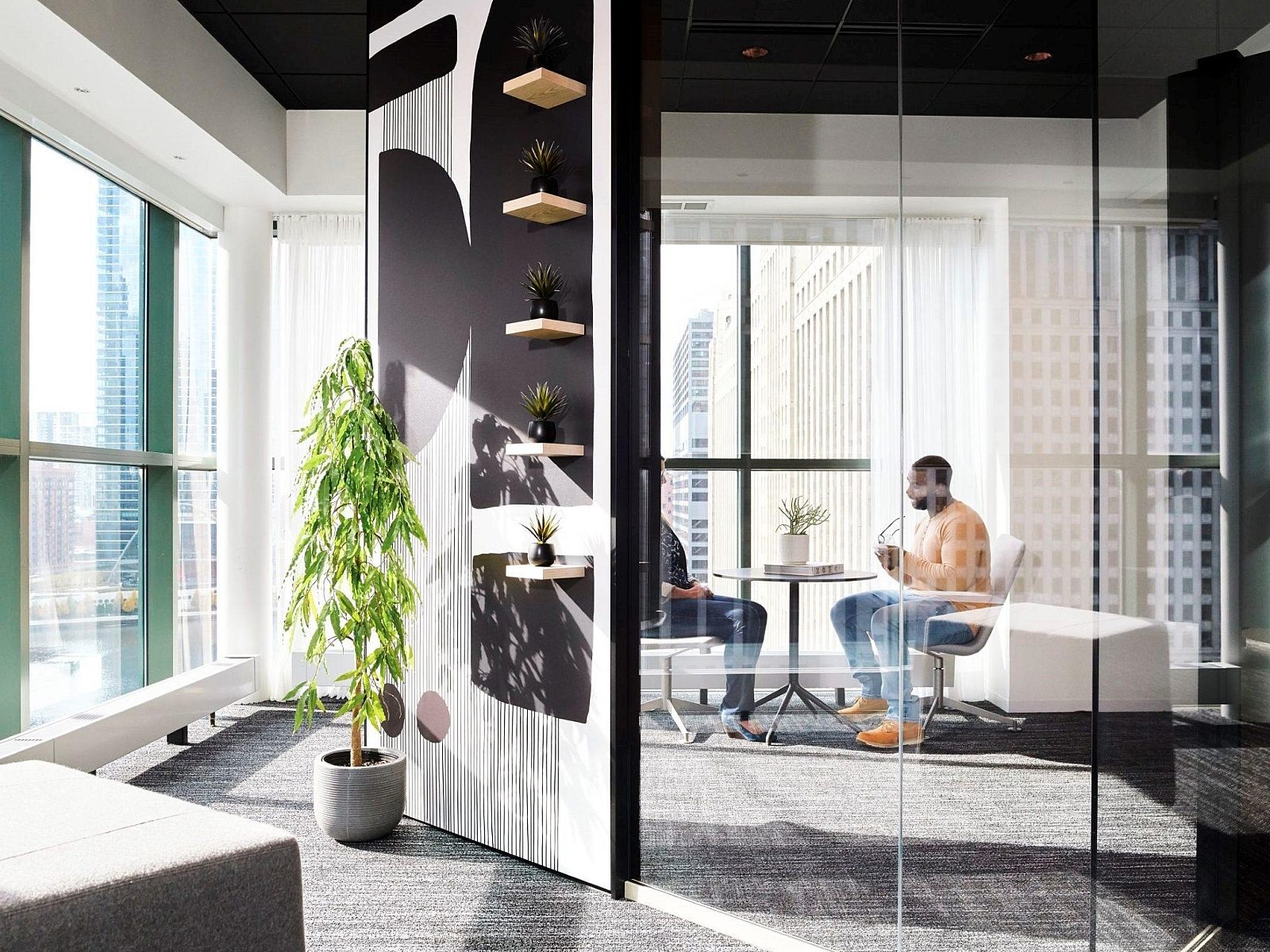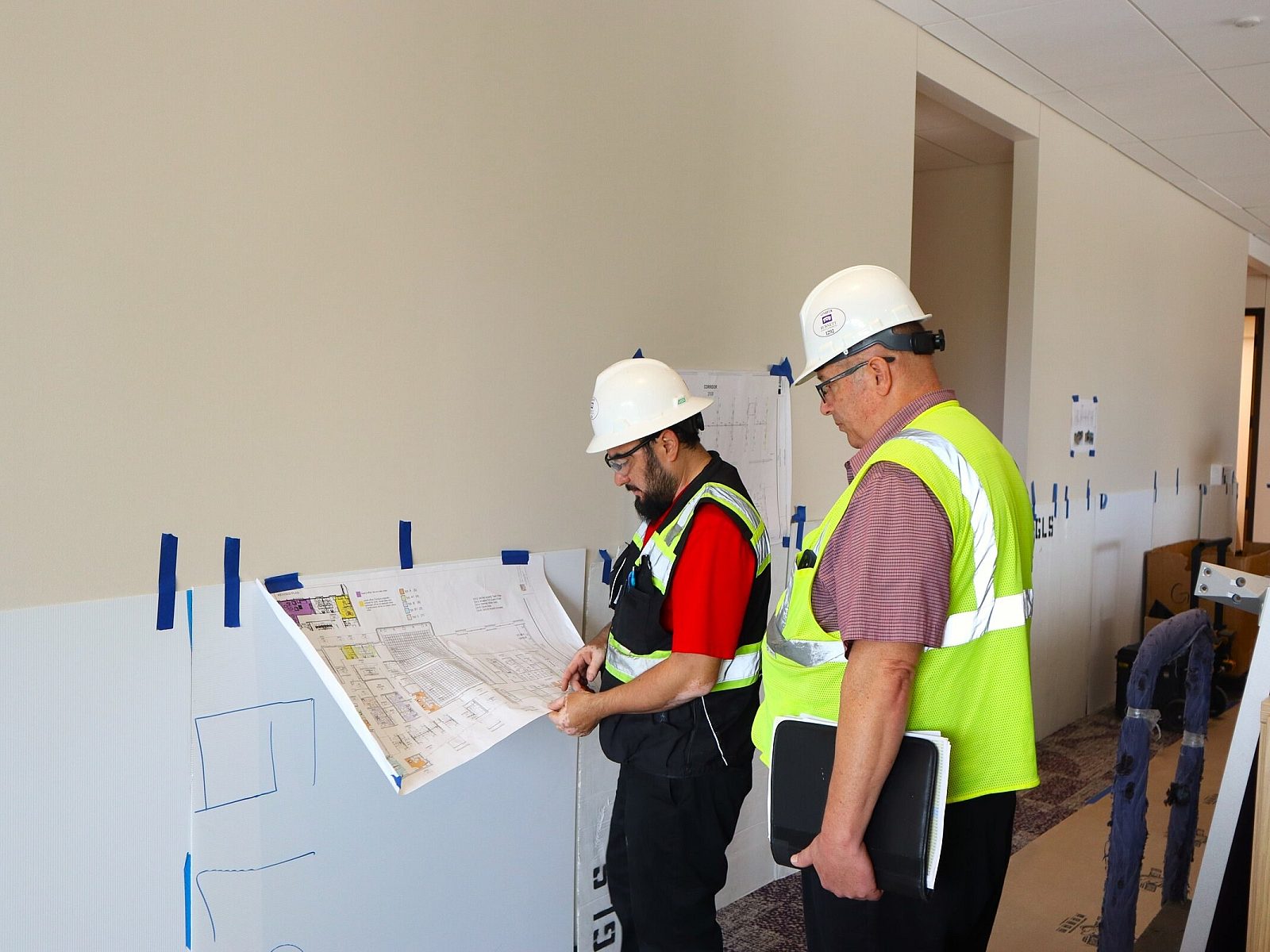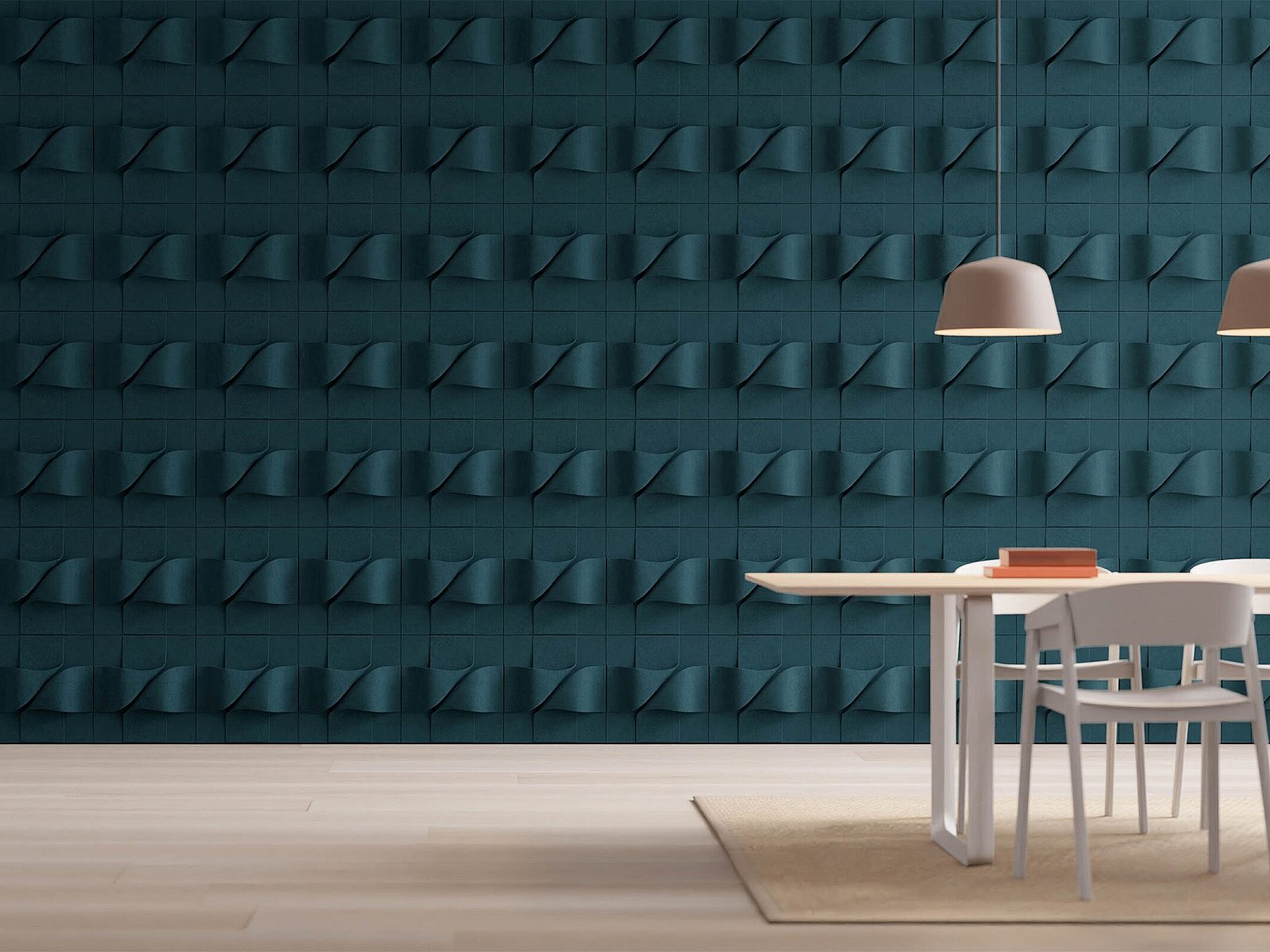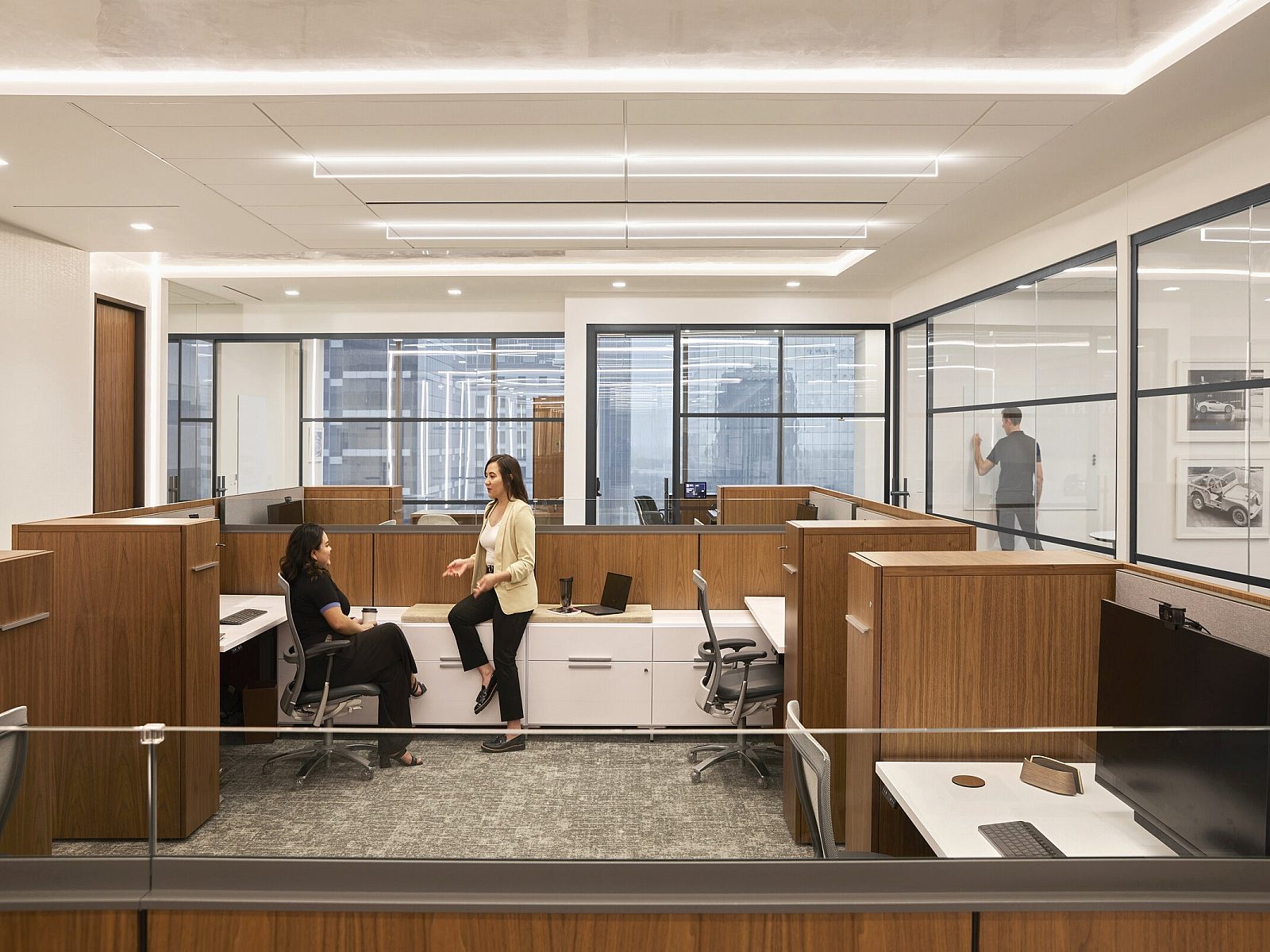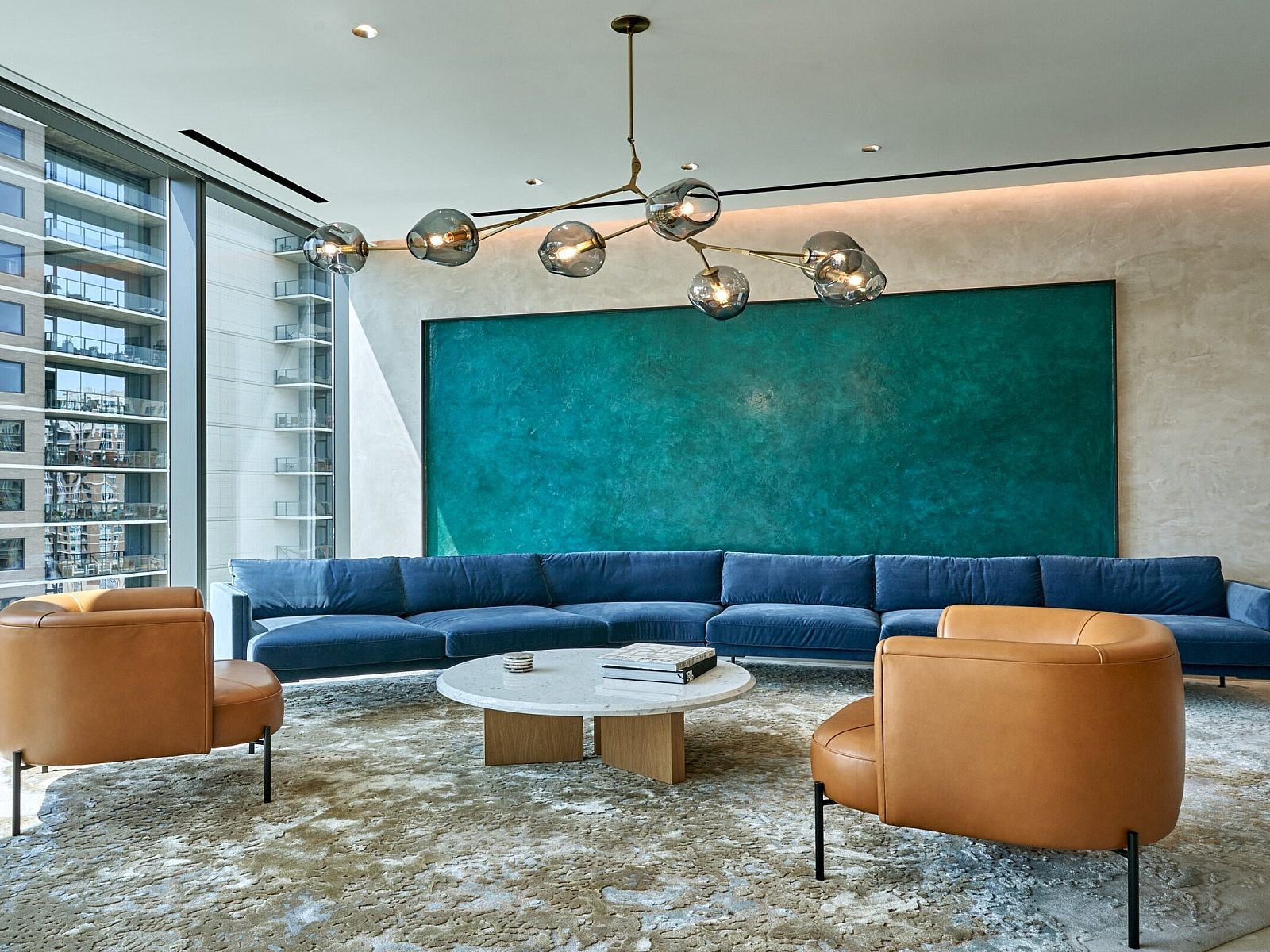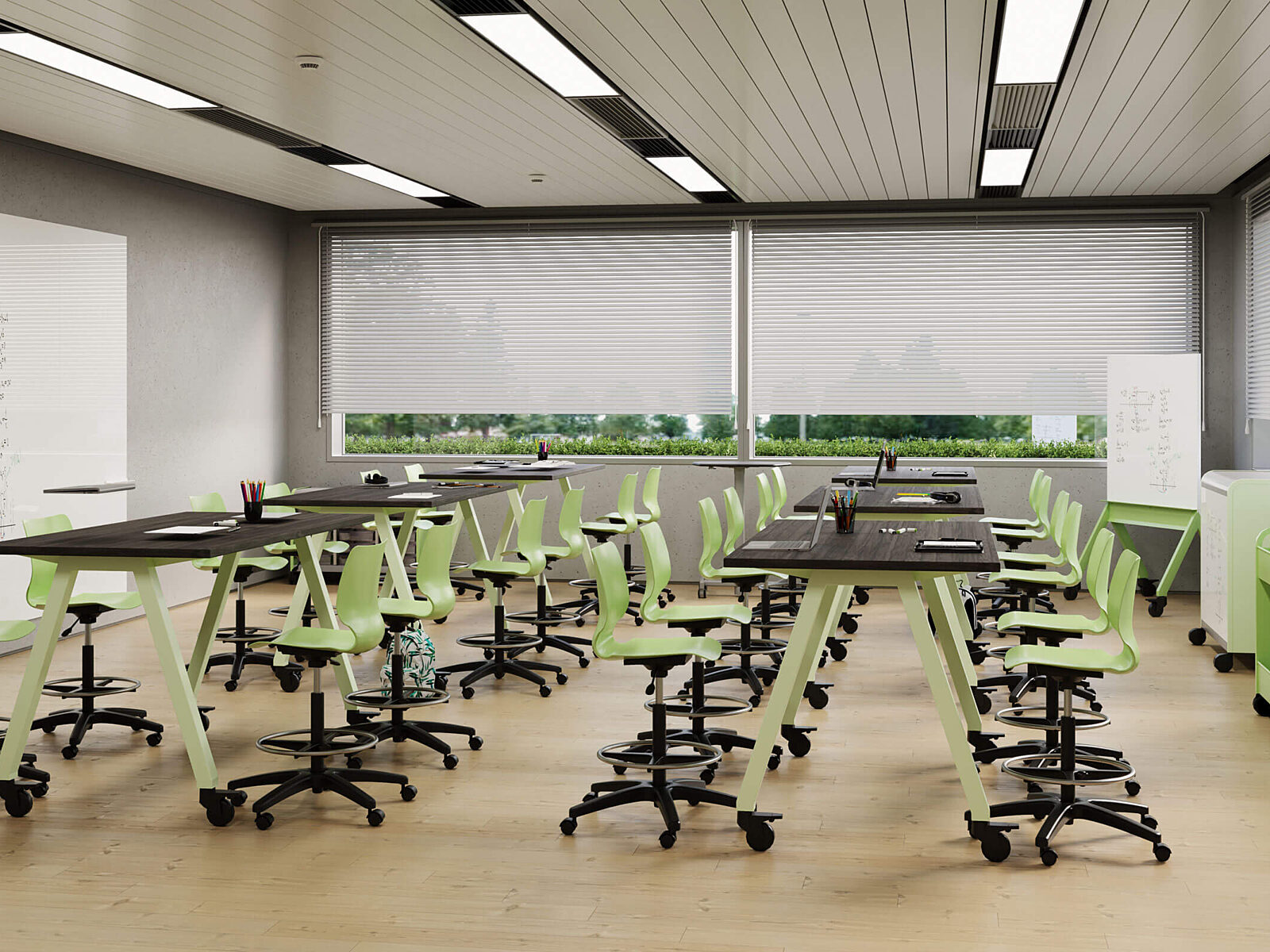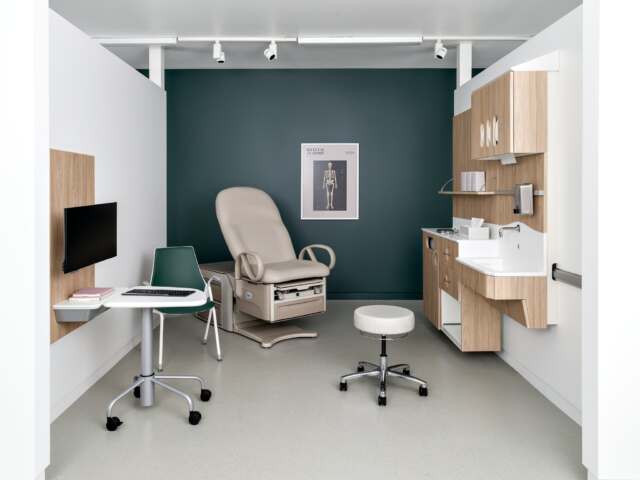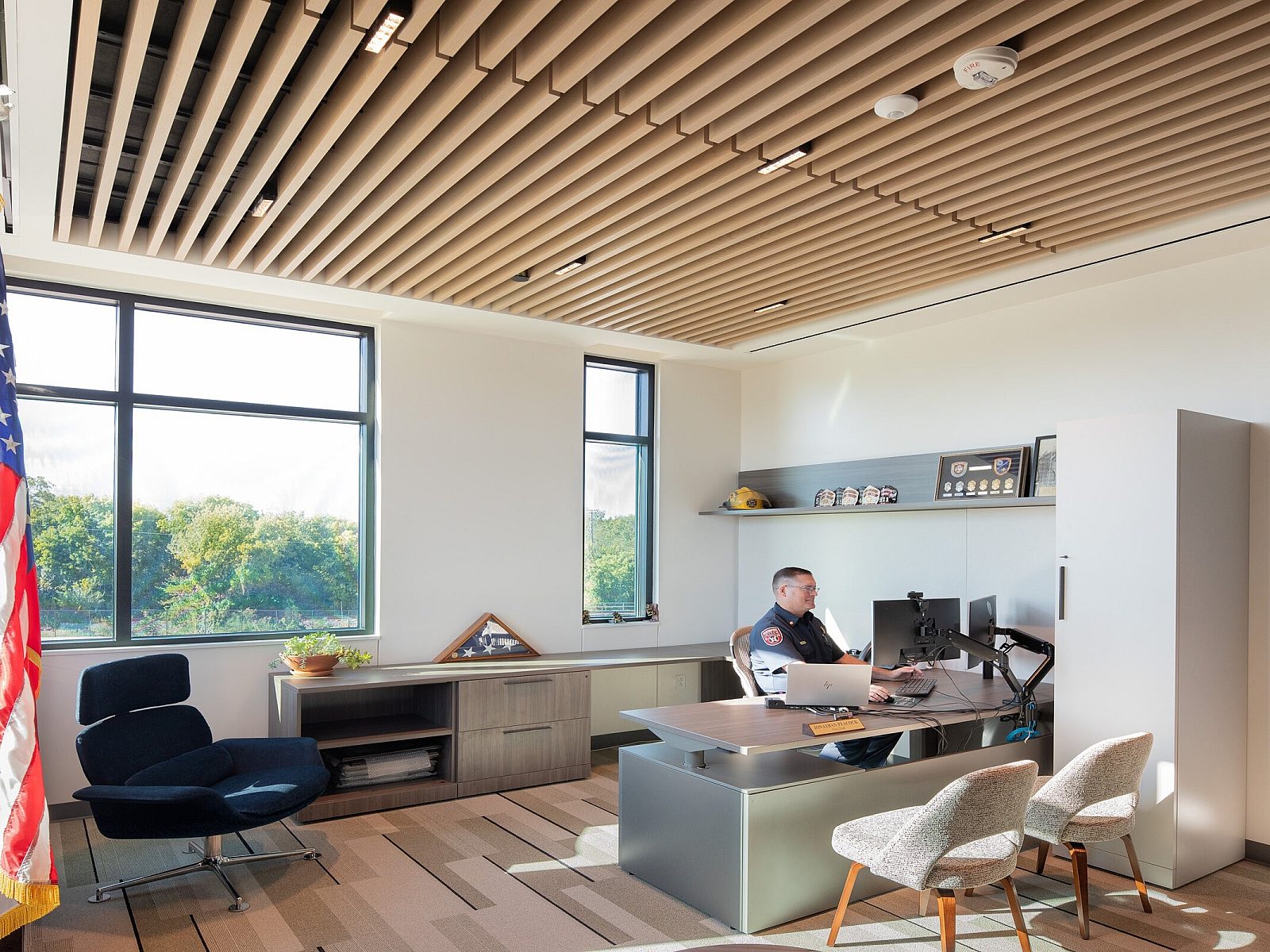Co-Design: GLSC Pairs Advanced Technology and Human Expertise
Co-Design is a personalized and collaborative experience. We pair our people and technology in order to bring you the best results. Learn more now.

Co-Design: GL Seaman & Company Pairs Advanced Technology and Human Expertise to Meet Today’s — and Tomorrow’s — Office Space Planning Challenges
Now more than eight months into an extended experiment in working from home, many employees have developed a new appreciation for “the office” — both the space itself and the unique culture it can nurture. As Robin Rucker, GL Seaman’s Vice President - Client Engagement & Workplace Strategy, observes: “We’re probably never going to work in a siloed, ‘heads-down’ manner again. Now that they’ve had to face the unprecedented challenges that come with operating through a pandemic, businesses understand better than ever how critical collaboration is to problem-solving, innovation, and change management.”
To support that collaboration, Robin adds, businesses need to invest in “fluid spaces.” Since the onset of the pandemic, GL Seaman’s designers have been deploying a new, multi-faceted solution to creating such spaces: Co-Design.
What Is Co-Design?
First and foremost, Co-Design is a process. Project Designer Jessie Le defines it as “a design approach that allows our clients to participate as fully as possible in the ideation of their new workspaces.”
Viewed from another point-of-view, however, Co-Design is a technology. Senior Associate Francie Wintermute emphasizes this aspect of Co-Design, describing it as “a virtual or in-person live design session during which changes can be made electronically in response to feedback from all stakeholders: the client, the furniture manufacturer, the designer, and the project coordinator.”
What does this mean in practice? To answer this question, it first helps to understand how office space planning efforts proceeded before the advent of Co-Design. Jessie explains: “We would have our initial meeting, then we would start on designs for the client’s furniture. Once we had completed our floorplans, we would email them to the client. The client would then send us any changes or reconfiguration requests via email. Getting everything right could — and often did — take several rounds of emails.”
In contrast, Co-Design leverages the power of Configura’s 3D rendering CET Designer software, teleconferencing tools, and remote desktop solutions to transform the review and approval process into one that is more immersive, more synchronous, more efficient, and more mistake-proof. According to Project Designer Lizzy Graham, “CET replicates the look and feel of the finished space. That helps many clients, especially those who have trouble visualizing their furniture based on line drawings, better define what they do or don’t like about their proposed office space. Co-Design gets us all on the same page at the same time and takes a lot of guesswork out of what we do.”
Finally, Robin encourages clients to think of Co-Design as the perfect marriage of art and science. “Any technology is only ever as good as the human operator wielding it. If you don’t put the paintbrush in the painter’s hand, you’re not going to get the masterpiece that you expected,” she says. “Co-Design empowers our customers to articulate their needs. It also helps them appreciate that our design solutions aren’t prescriptive — that they’re completely customizable. And it accentuates the extraordinary value our people bring to the process. We employ some of the most tenured business furniture professionals in the entire Texas market, including 18 highly trained and credentialed designers, and that shows both in their expertise and commitment to customer service.”
The Many Practical Benefits Of Co-Design
Co-Design is an ethos. It is a more inherently dynamic and collaborative way to plan workspaces that reflect a company’s brand and support its people’s productivity. But Co-Design also helps clients with their bottom line in other ways.
1) Co-Design supports real-time changes to design collateral. For example, during a Co-Design session, clients can see different finish and/or upholstery choices applied within the CET render, eliminating both the wait times and expenses associated with ordering and shipping samples.
2) Co-Design updates project budgets in real-time. The costs associated with any changes to the designs within CET are computed instantaneously.
3) By speeding up the specification process, Co-Design brings projects to the order phase much more quickly. It also reduces order lead times, especially for quick-ship products.
4) Because all design choices and final renderings are visually confirmed, Co-Design also aids in mistake-proofing the installation process.
Robin summarizes the practical benefits of Co-Design quite succinctly. “Co-Design makes every step of the design process a better experience.”
Co-Design In Action
One of Texas’s preeminent not-for-profit healthcare systems recently came to GL Seaman with a dilemma. According to Jessie, the project “had a ton of typicals, but each office also needed to be individually tailored.” The problem? How to incorporate personalized features while preserving the space’s overall architectural legibility, promoting teamwork, and nurturing an overall sense of belonging.
Further, as Robin explains, the client viewed that personalization as more than a perk. Instead, they saw it as essential to creating a work environment that reinforced their business’ core values. “There’s nothing more intimate in an office space than furniture. It touches you every single day,” she says. “If you’re a brand that assigns a high priority to its people’s health and well-being, then you’re a brand that has to think about the anatomy of your workspaces — its rhythms, its interfaces, where and how it bends.”
Here, Co-Design’s agility proved indispensable. “This project presented us with significant logistical challenges. But, using Co-Design, we were able to conduct conversations with each user and show them all aspects and angles of their office,” Jessie recalls. “Co-Design made it much, much easier to record each user’s preferences, translate them into orders we could send to our manufacturing partners, and feel confident that we could deliver everything each user asked for.”
Since March 2020, GL Seaman and its partners have also leveraged Co-Design to:
- Create a truly pet-friendly workplace for one of the veterinary supply industry’s largest and most respected manufacturers.
- Upgrade a local professional sports franchise’s technology integration relative to their furniture and office spaces.
- Transform an individual department within a firm that provides financial coaching to military veterans and their families into a dynamic workplace. Ultimately, this company’s leadership hopes to redesign their entire facility based on the learnings gleaned from this pilot project.
Looking forward to 2021 and beyond, Francie, Jessie, Lizzy, and Robin are excited about augmenting their Co-Design skills and enhancing the full range of services GL Seaman offers. “CET is a powerful tool, but it would be great if we could do in-house fly- or walk-throughs to give our clients a more virtual reality-like experience of their new spaces,” says Francie.
Jessie, meanwhile, is thinking about the lifting of lockdowns and a return to less distanced social interactions: “We’re gearing up to conduct more Co-Design in-person,” she says. “Things still get lost in translation in virtual meetings. Communicating face-to-face should make the Co-Design process more beneficial for everyone involved.”
Adds Robin: “We consider Co-Design the new normal. Our clients, their architects, designers, and real estate consultants are demanding speed and simplicity. Co-Design is our answer. Co-Design takes the customer from concept to floorplan to buildout to move-in more efficiently than ever before possible.”
For over 30 years, GL Seaman has provided innovative, adaptive, elegant, and sustainable business furniture and office design solutions to leading companies across North Texas. Contact us today to learn how Co-Design can help you plan the space your people need to do their most extraordinary work.



